Qualities of Effective Educator Professional Development
Most administrators and teachers believe in the importance and value of professional development. Sadly, though, too many teachers believe that those mandatory, one-size-fits-all professional development sessions offered by their schools are a waste of time and money.
Randi Weingarten, president of the American Federation of Teachers, said in a statement, “Even high quality professional development must be directly relevant to the needs of teachers and genuinely improve teaching and learning.” Weingarten said. “And low-quality professional development, frankly, feels like detention.” (New Report Reveals That Teacher Professional Development Is Costly And Ineffective)
Teacher professional learning is of increasing interest as a critical way to support the increasingly complex skills students need to learn in order to succeed in the 21st century. Sophisticated forms of teaching are needed to develop student competencies such as deep mastery of challenging content, critical thinking, complex problem solving, effective communication and collaboration, and self-direction. In turn, effective professional development (PD) is needed to help teachers learn and refine the instructional strategies required to teach these skills. However, research has noted that many professional development initiatives appear ineffective in supporting changes in teachers’ practices and student learning.(Effective Teacher Professional Development)
What follows are the general guidelines I use to plan and structure my professional development workshops. Recently, I facilitated two weekends of math instruction for elementary teachers. I use these workshops as a reference in this discussion.
- Voluntary
- Models Best Classroom Practices
- Active and Hands-On
- Fun and Engaging
- Engages the Mind, Body, Emotions
- Time to Tinker and Play
- Collaboration
- Ability to Tailor to Own Needs
- Natural Integration of Technology
- Reflection Built In
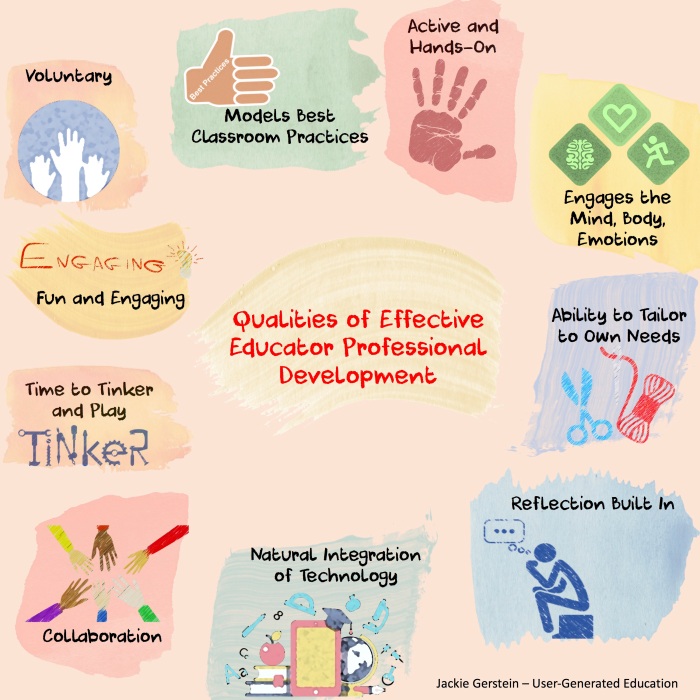
Voluntary
Teacher PD needs to be voluntary.
The fact that adults are voluntary participants in the learning situation has profound implications for how learning occurs. They are generally highly motivated and primed to get the most out of the situation as possible. They will tackle tasks with enthusiasm, provided they are seen as relevant. This means that they are more likely to embrace participatory learning techniques such as discussion, role playing, small group work and the analysis of personal experiences.
The reverse side of voluntary participation by adults is that they can just as easily withdraw. Unlike the disruption that occurs when participation is mandatory, adults are likely to do one of two things. They will either quietly withdraw altogether or, if that is not really an option, they will continue to show up and do what is minimally expected of them, but will essentially become passive participants. (Principles underlying Effective Practices in Adult Education)
My weekend math workshops were offered to elementary teachers in a specific school district as a voluntary opportunity. A grant did provide them with a stipend for attending but as one of the attending teachers noted, “Even with a stipend, I wouldn’t volunteer for a weekend workshop unless I was interested in learning how to be a better teacher of math” (in this case).
Models Best Classroom Practices
First and foremost, teacher PD needs to model best classroom practices. “Curricular models and modeling of instruction provide teachers with a clear vision of what best practices look like” (Effective Teacher Professional Development). If the desire is to have educators create and implement engaging, interactive, and fun learning activities, then PD needs to be a mirror of these practices. I always believed that is is hypocritical to lecture about these best practices. It should be a process of modeling.
In order to model best classroom practices during my math workshops:
- I used videos, mostly from The Teaching Channel, to show elementary teachers modeling best practices in math within their own elementary classrooms.
- I did math activities with the teacher participants as if they were students in my elementary classroom.
Active and Hands-On
Active learning engages teachers directly in designing and trying out teaching strategies, providing them an opportunity to engage in the same style of learning they are designing for their students. Such PD uses authentic artifacts, interactive activities, and other strategies to provide deeply embedded, highly contextualized professional learning. This approach moves away from traditional learning models and environments that are lecture based and have no direct connection to teachers’ classrooms and students. (Effective Teacher Professional Development)
Other than explaining activities, showing videos and presenting some technology options, all of learning activities during the weekend workshop were hands-on and active.
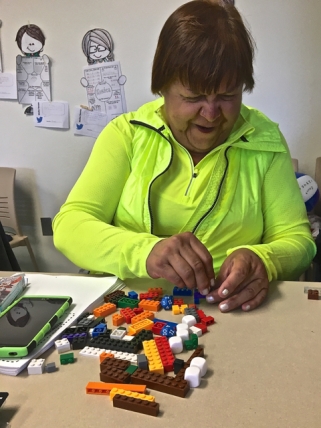
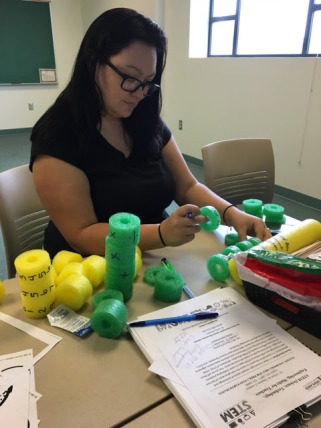
Fun and Engaging
Somewhere along the line of professional development, it became a way too serious endeavor. I believe this is a major reason why teachers don’t enjoy their professional development opportunities.
Fun has a positive effect on motivation levels, determining what we learn and how much we retain. If the learning isn’t fun, it won’t be effective. That’s not just a sneaking suspicion – it’s cold, hard, scientific fact.
- A study in the journal, College Teaching, found that students could recall a statistics lecture more easily when the lecturer added jokes about relevant topics.
- In her book, Neurologist, Judy Willis showed how fun experiences increase levels of dopamine, endorphins, and oxygen – all things that promote learning.
- In a study for the Journal of Vocational Behaviour, Michael Tews found that employees are more likely to try new things if their work environment is fun. (Why Fun in Learning is Important)
Regardless of age, grade, content area, one measure of success I use is the quantity of laughter and squeals of joy. I heard lots of laughter during my workshops.
Engages the Mind, Body, Emotions
As an experiential educator and regardless of the age level I am teaching, I emphasize multi-sensory, whole person learning.
We learn best when we think, feel and do. That’s the message of Dr. Adele Diamond, a cognitive developmental neuroscientist who currently teaches at the University of British Columbia in Canada. We might refer to this as “whole body learning.” According to Dr. Diamond, the executive function of the brain — the prefrontal cortex — works best when we go beyond the rational mind by also involving emotions and physical behaviors. That makes sense since the more we involve other parts of the brain, the more neural connections we make that reinforce learning. (Brain Research: To Improve Learning, Use Whole Body)
My math workshop was not exception as activities that use the body, mind, and emotions were introduced to the participating teachers.
Time to Tinker and Play
Teachers and librarians, like their students, need hands-on experience with tools and with playing to learn as that helps them build creative confidence. (Crafting Professional Development for Maker Educators)
Teachers, during PD, should be provided with time, resources, and materials with which to play. It sets the expectation that they will be active agents of their own learning. It gives them the message it is okay to play and experiment with the materials; that tinkering is often needed as a part of learning new skills.
Given that the nature of the workshop was hands-on and active, workshop participants were time to tinker with the resources and materials provided.
Ability to Tailor to Own Needs
One of the justified complaints of teachers regarding their schools’ professional development is that it is often of the too generic, one-size-fits all variety. To be effective, professional develop should help teachers address their own classroom needs. Participating teachers were given lots of resources and opportunities to develop math activities specific for their grade level and students.
Integrates Collaboration
High-quality PD creates space for teachers to share ideas and collaborate in their learning, often in job-embedded contexts. By working collaboratively, teachers can create communities that positively change the culture and instruction of their entire grade level, department, school and/or district. (Effective Teacher Professional Development)
At the beginning of the workshop, participants were asked to form groups with same grade level teachers forming what I called mini-PLNs. Part of the workshop time was devoted to teachers developing materials for their own classrooms and students. During the time, the teachers could work with their mini-PLNs. They were also asked to share, throughout the weekend, the activities they discovered and developed. These sharing sessions often led to feedback and ways the activities could be modified for a variety of student populations.
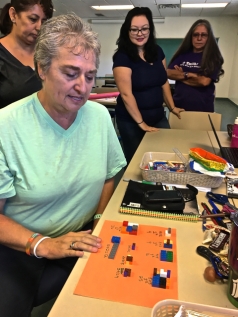
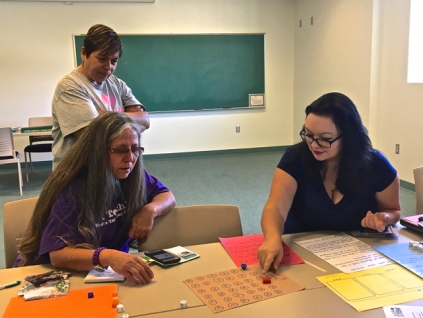
Naturally Integrates Technology
Technology use within all learning and teaching environments including professional development should be ubiquitous; it’s use should be determine by its potential to enhance and increase learning.
During my math workshop, participants used technology to:
- Access the workshop slides.
- Explore learning activities for the manipulatives I provided: dice, pool noodles, Legos. playing cards, beach balls.
- Try out online math games: ABCya, Toy Theater Math, Prodigy, and Code.org.
- Take photos of math examples in school building.
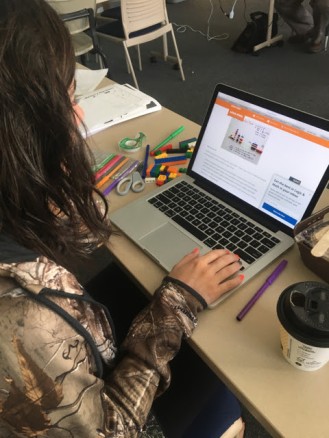
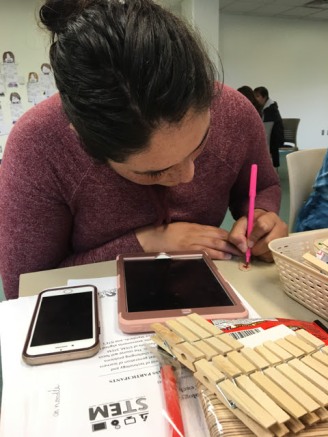
Builds in Reflection
High-quality professional learning frequently provides built-in time for teachers to intentionally think about, receive input on, and make changes to their practice by facilitating reflection and soliciting feedback. Feedback and reflection both help teachers to thoughtfully move toward the expert visions of practice. (Effective Teacher Professional Development)
As a final reflection for the weekend, I asked participating teachers to use the following prompt to create a mini-poster of their learning. It also modeled how to use such a reflection process with their students.
. . . and here is a video recording of one of the participating teacher’s reflections:
As a parting shot, here are the slides I used during the workshop:
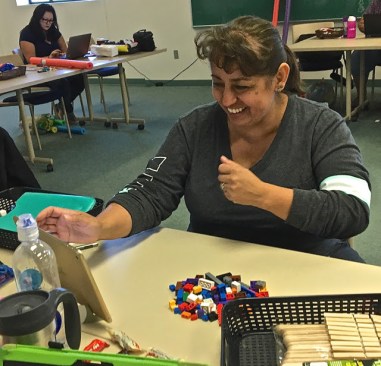
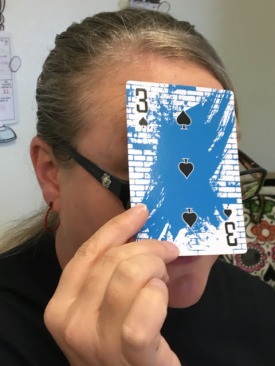
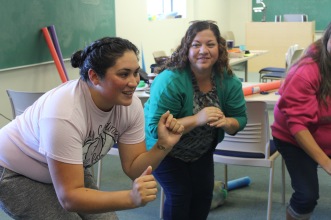
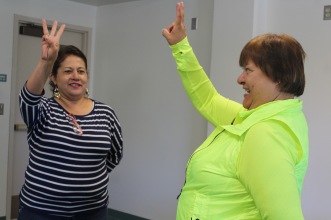
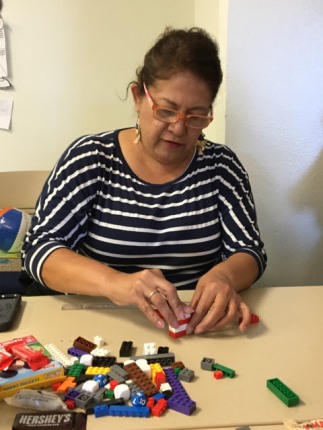
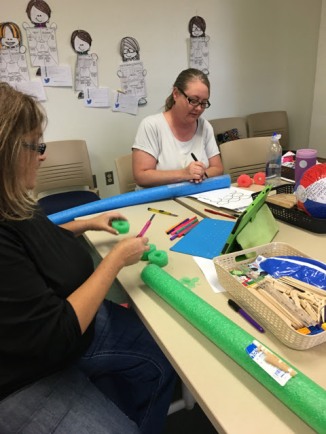


Dr. Gerstein, this is a fantastic resource! When planning teacher PD, considerations for innovation and holistic instruction are crucial.
Megan Olivia Hall
October 19, 2017 at 1:55 am
Thanks, Megan!
Jackie Gerstein, Ed.D.
October 19, 2017 at 7:51 pm